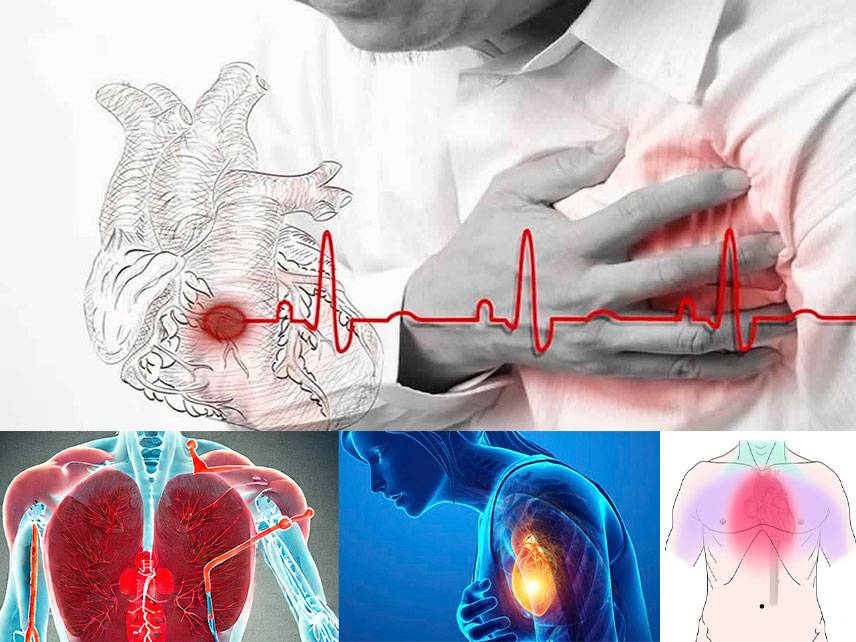When it comes to heart health, it’s important to understand the symptoms, diagnosis and treatment of angina pectoris. Angina pectoris is a type of chest pain caused by a temporary decrease in the amount of oxygen-rich blood flowing to the heart muscle. It is a symptom of coronary heart disease (CHD), a condition that occurs when the arteries that supply blood to the heart become narrowed or blocked. This can happen when fatty deposits build up in the arteries and restrict blood flow.
Signs and symptoms of Angina pectoris
Risk factors for Angina pectoris
Coping and support for Angina pectoris
Complications of Angina pectoris
Signs and Symptoms of Angina Pectoris
The most common symptom of angina is chest pain or discomfort that can feel like pressure, squeezing, fullness or pain. This pain usually occurs in the center of the chest and may also spread to the shoulder, arms, back, neck, throat or jaw. Other symptoms can include nausea, lightheadedness, sweating and shortness of breath. Angina is usually triggered by activities that require increased oxygen to the heart, such as climbing stairs, walking fast or doing housework.
Causes of Angina Pectoris
The most common cause of angina is coronary heart disease, which is when the arteries that supply blood to the heart become narrowed or blocked. This can happen when fatty deposits build up in the arteries and restrict blood flow. Other causes of angina can include anemia, low blood pressure, high cholesterol, smoking, diabetes, thyroid disease and certain medications.
Risk Factors for Angina Pectoris
Some of the risk factors for angina include age (over 40), family history, high blood pressure, high cholesterol, smoking and diabetes. Other risk factors include being overweight, having a sedentary lifestyle and using certain medications.
Prevention of Angina Pectoris
The best way to prevent angina is to reduce your risk factors. This includes quitting smoking, eating a healthy diet, exercising regularly and controlling your blood pressure and cholesterol. It is also important to keep your weight in check, as being overweight can increase your risk of developing angina.
Diagnosis of Angina Pectoris
Your doctor will ask about your medical history and do a physical exam to look for signs and symptoms of angina. They may also order tests, such as a stress test, EKG, chest x-ray, echocardiogram or cardiac MRI, to help diagnose the condition.
Diagnosis of Angina Pectoris:
1. Review the patient's medical history:
Ask the patient about the duration, frequency, and intensity of chest pain. Also, inquire about any other symptoms the patient may be experiencing such as shortness of breath, nausea, dizziness, and fatigue.
2. Perform a physical examination:
Check for signs of physical distress such as sweating, pale skin, and a rapid heartbeat.
3. Order appropriate diagnostic tests:
Depending on the patient’s symptoms, order an electrocardiogram (ECG), chest X-ray, echocardiogram, stress test, or cardiac catheterization.
4. Evaluate the test results:
Analyze the results of the diagnostic tests to determine if they are indicative of angina pectoris.
5. Make a diagnosis:
If all of the symptoms and test results are consistent with angina pectoris, make a diagnosis and recommend an appropriate treatment plan.
Treatment of Angina Pectoris
Treatment for angina is aimed at relieving symptoms, managing risk factors and preventing future attacks. Treatment may involve lifestyle changes, medications or surgery. Lifestyle changes include quitting smoking, exercising regularly, eating a healthy diet and controlling your blood pressure and cholesterol. Medications may include nitrates, beta-blockers, calcium channel blockers or ACE inhibitors. Surgery may include angioplasty or coronary artery bypass graft (CABG).
Prognosis of Angina Pectoris
The prognosis of angina depends on the underlying cause and the severity of the condition. In most cases, angina can be managed with lifestyle changes and medications. However, in some cases, surgery may be necessary.
Coping and Support for Angina Pectoris
If you are diagnosed with angina, it is important to find support and resources to help manage your condition. This can include talking to your doctor, joining a support group or attending cardiac rehabilitation. It is also important to follow your doctor’s advice and take your medications as prescribed.
Complications of Angina Pectoris
The most serious complication of angina is a heart attack. Other complications include arrhythmias, stroke, pulmonary edema and heart failure.
Living with Angina Pectoris
Living with angina can be difficult, but there are things you can do to manage your symptoms and reduce your risk. This includes following your doctor’s advice, quitting smoking, eating a healthy diet, exercising regularly and controlling your blood pressure and cholesterol. It is also important to get regular check-ups with your doctor and take your medications as prescribed.
Angina pectoris is a type of chest pain caused by a temporary decrease in the amount of oxygen-rich blood flowing to the heart muscle. It is a symptom of coronary heart disease and can be managed with lifestyle changes, medications or surgery. It is important to understand the symptoms, diagnosis and treatment of angina pectoris in order to reduce the risk of complications and improve quality of life.





